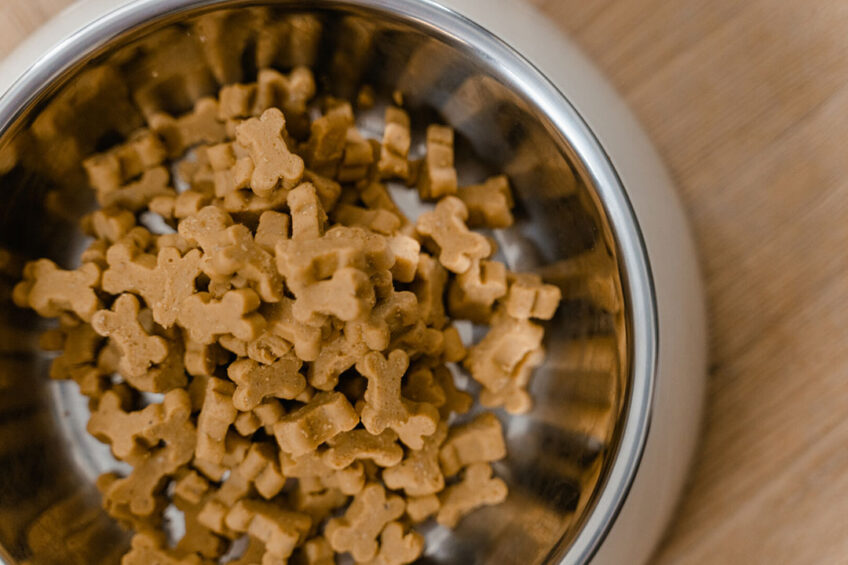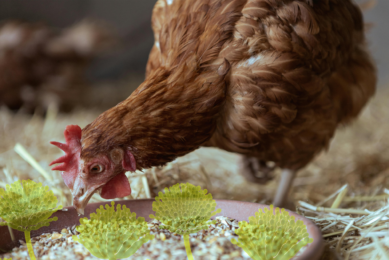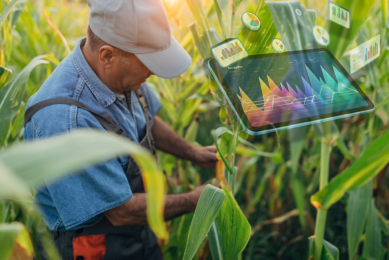Corn in pet food: A blessing or a curse?

This article discusses the effect of corn in pet food. It covers health, nutrient digestibility as well as the potential physiological implications of corn and secondary products derived from corn.
The majority of feed for dogs and cats comprises dry food including whole meals or treats with market estimates worth US$72.64 billion worldwide in 2022. Dry food contains between 30% to 60% grains such as corn, which provides energy, nutritional value, and kibble binding and expansion properties. Corn is a major crop for farmers in North America and the yield in the United States was estimated at 173.3 bushels per acre in 2022. The pet food market in North America is about 8.5 million metric tonnes and corn contributes up to 0.67 million metric tonnes of this market. However, corn has lost nearly 20% of market share to the grain-free segment since the beginning of the millennium due to disparaging information without scientific evidence and the lack of consolidated information that contradicts incorrect statements.
Does corn in pet food cause diabetes?
Corn varieties used in pet foods have on average 88% dry matter, 1.42% ash, 9.79% crude protein, 6.01% fat, 77.2% starch, and 10.8% total dietary fibre. Corn provides energy, some fibre, protein, and fatty acids to the diet. It is digested in the duodenum where it produces maltotriose, alphalimit dextrins and maltose, which are further digested by enzymes into glucose. Then, glucose is absorbed in the jejunum, where it enters the bloodstream to be transported into cells. Feeding highly digestible starches enhances glucose and insulin in blood plasma and results in insulin resistance and thus the development of type II diabetes. This is why it is required to combine different starch sources in the diet and to modify the process to favour the retention of slowly digestible or resistant starches to control the glucose absorption rate.
Does corn affect nutrient digestibility?
Proper cooking increases the ileal digestibility of corn in pet food and the remaining undigested portion of corn that escapes small intestinal digestion is fermented in the colon. In addition, high protein corn has greater dry matter ileal digestion than conventional, low protein and low phytate corn, high-amylose corn and amylomaize. Therefore, it is recommended to avoid high-amylose corn in pet food. Increasing dietary corn content is associated with an improvement in the apparent total tract digestibility of starch. However, dietary corn content has no significant relationship to the digestibility of dry matter, crude protein, fat, and gross energy.
What happens to gut health?
Corn endosperm contains digestible starch and it is resistant to digestion starch. The starch that is resistant to digestion is fermented by bacteria in the colon where it produces short chain fatty acids such as acetate, propionate, and butyrate. These are used as an energy source, promote the growth of beneficial gut microbiota, and support the gut immune function and homeostasis. A diet produced with coarser ground corn and lower extruder-specific mechanical energy benefits the colonic health of dogs and increases the amount of faecal short chain fatty acids. Less processing of pet food increases gut mucosa crypt depth and improves nutrient absorption. Dogs fed a corn-rich diet produce firm faeces with low ammonia and neutral faecal pH (7.2) as well as 30% more faecal short chain fatty acids. This indicates that less protein reaches the colon for putrefaction and the production of unhealthy nitrogen compounds such as indoles and phenols.
Antioxidant activity of corn
Corn is high in carotenoids such as lutein and zeaxanthin, which are xanthophylls with antioxidant capacity. In addition, lutein improves humoral and cellular immune responses in dogs and cats after just 2 weeks. Processing hydrolysed corn gluten meal with alkaline protease enhances antioxidant activities including free radical scavenging, metal ion chelating activity and lipid peroxidation inhibition.
Allergen, mycotoxin contamination, and genetically modified corn
There is a low probability that pet food produced with corn and other grains are allergens. According to research studies food allergies in dogs are mainly caused by animal protein (36% beef, 28% dairy, 10% eggs, 9.6% chicken, 4% pork, 1% rabbit, and 1% fish), and 15% wheat. Mycotoxins are secondary metabolites of fungal metabolism which can cause severe acute or chronic health conditions. Generally, mycotoxin contamination in pet food is caused by aflatoxin, fumonisin, and deoxynivalenol. According to the US Food and Drug Administration the maximum legal limit for aflatoxins in corn used in pet foods is 20 ppm. Even one highly contaminated kernel in a 2.3 kg sample could result in more than 20 ppb of aflatoxin. On the other hand, genetically modified corn such as Bacillus thuringiensis corn that might be viewed as negative by some consumers actually has a lower incidence of mycotoxin contamination.
Impacts of secondary products derived from corn
Corn gluten meal is a secondary product with a high protein concentration and low amounts of ash, crude protein, acid-hydrolysed fat, total dietary fibre and nitrogen-free extract. Corn gluten meal added to cat diets reduces dry matter apparent total tract digestibility, increases faecal moisture, and reduces urine pH. Corn germ meal has lower crude protein and gross energy, but higher total dietary fibre and ash compared with corn gluten meal. Increasing the level of corn gluten feed in dogs’ diet reduces the digestibility of all nutrients. Using native corn in dog feed increases the apparent total tract digestibility of dry matter and total dietary fibre compared to other fibre sources such as beet pulp. In addition, diets containing distillers dried grains are a viable protein source providing a substrate for colonic fermentation and supporting gut health.
Concluding remarks
Corn is one of the most common cereal crops worldwide with an important role in the pet food market in North America. Adding corn to pet food has benefits including nutritional availability, producing regular elimination and quality stools, promoting palatability, and providing functional benefits to extrusion. In addition, secondary products derived from corn are quality sources of concentrated protein, fibre and energy, which can improve the sustainability of corn. However, there is still controversy about the long-term impacts of genetically modified corn; therefore, further long-term studies are recommended.
Source: Isabella Corsato Alvarenga, Amanda N. Dainton & Charles G. Aldrich (2022) A review: nutrition and process attributes of corn in pet foods, Critical Reviews in Food Science and Nutrition, 62:31, 8567-8576











